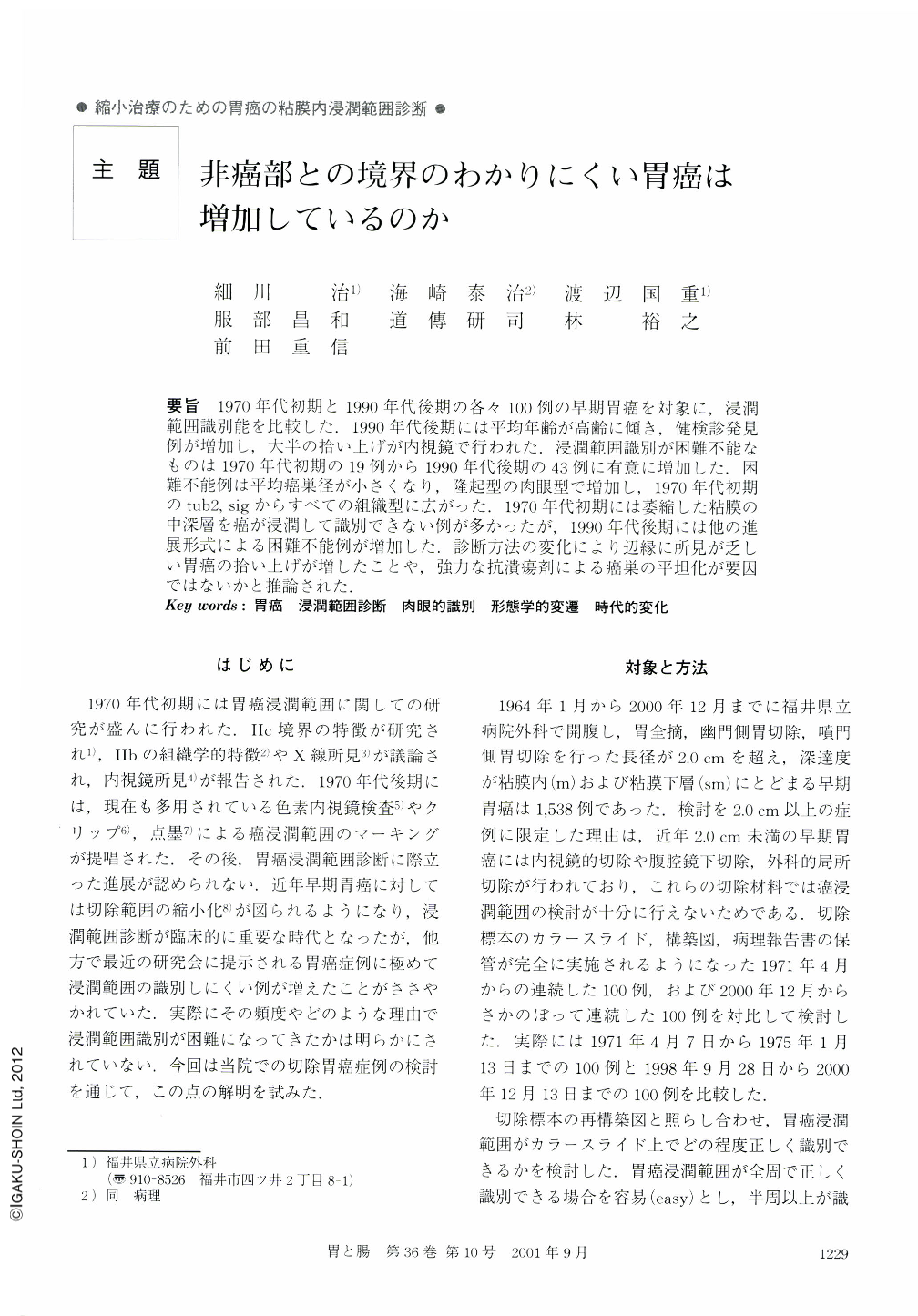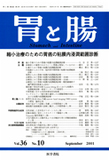Japanese
English
- 有料閲覧
- Abstract 文献概要
- 1ページ目 Look Inside
- サイト内被引用 Cited by
要旨 1970年代初期と1990年代後期の各々100例の早期胃癌を対象に,浸潤範囲識別能を比較した.1990年代後期には平均年齢が高齢に傾き,健検診発見例が増加し,大半の拾い上げが内視鏡で行われた.浸潤範囲識別が困難不能なものは1970年代初期の19例から1990年代後期の43例に有意に増加した,困難不能例は平均癌巣径が小さくなり,隆起型の肉眼型で増加し,1970年代初期のtub2,sigからすべての組織型に広がった.1970年代初期には萎縮した粘膜の中深層を癌が浸潤して識別できない例が多かったが,1990年代後期には他の進展形式による困難不能例が増加した.診断方法の変化により辺縁に所見が乏しい胃癌の拾い上げが増したことや,強力な抗潰瘍剤による癌巣の平坦化が要因ではないかと推論された.
As patients with early gastric cancer frequently underwent local resection such as endoscopic mucosal resection and segmental resection, it became more important to recognize the borders of the lesions. We studied the change, over a period of about 20 years, of gastric cancer in terms of the difficulty encountered in recognizing its boundry.
A series of 100 patients with early gastric cancer resected in the late 1990s were compared with 100 patients with early gastric cancer in the early 1970s. The patients in the late 1990s were significantly older than those in the early 1970s. In the late 1990s the rate of patients without complaints increased and endoscopic examination had replaced x-ray examination as the initial diagnostic method.
In 19 patients of the early 1970s compared with the boundaries which were histologically proved, the extent of cancerous infiltration was not correctly recognized by the macroscopic investigation. In the late 1990s such patients increased to 43, which difference is significant. The difficult-to-recognize lesions increased significantly among the protruded type of early gastric cancers in the late 1990s. In the early 1970s the histological type of difficult-to-recognize lesions was confined to moderately differentiated adenocarcinomas and signet ring cell carcinomas, but in the late 1990s this difficulty was encountered in all histological types. In most of the difficult-to-recognize lesions of the early 1970s, cancerous cells had infiltrated the atrophic region and were covered with surface mucosa. However, in the late 1990s such lesions decreased and other infiltrating types increased.
Gastric cancers, whose borders were difficult-to-recognize, increased in the late 1990s in comparison with those in the early 1970s. We suggested that this change occurred due to the adoption of the new initial diagnostic method and the use of strong anti-ulcer drugs such as histamine H2-receptor antagonist and proton pump inhibitor. Endoscopist often detected gastric cancers with abnormalities inside the lesions but without abnornalites at the margins and these drugs tend to alter the margins of depressed lesions.

Copyright © 2001, Igaku-Shoin Ltd. All rights reserved.


